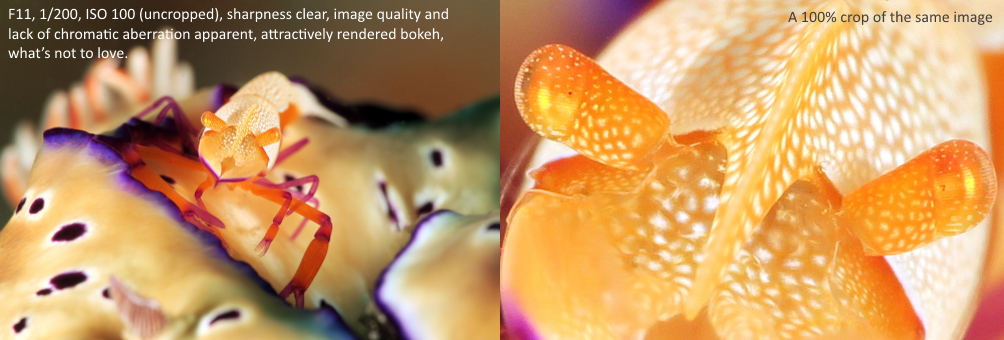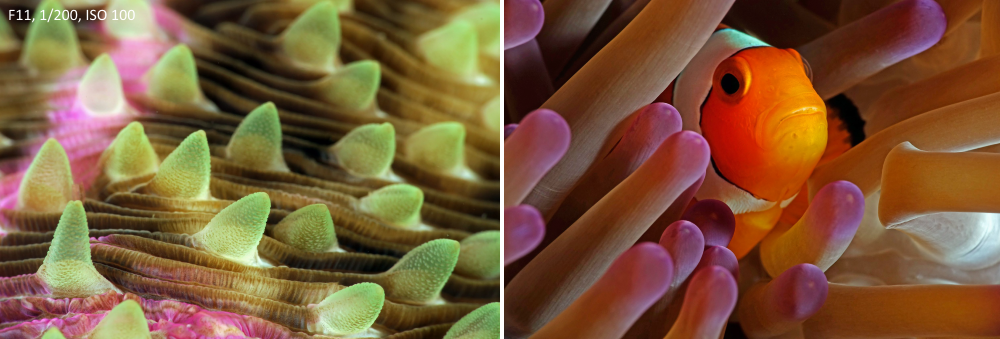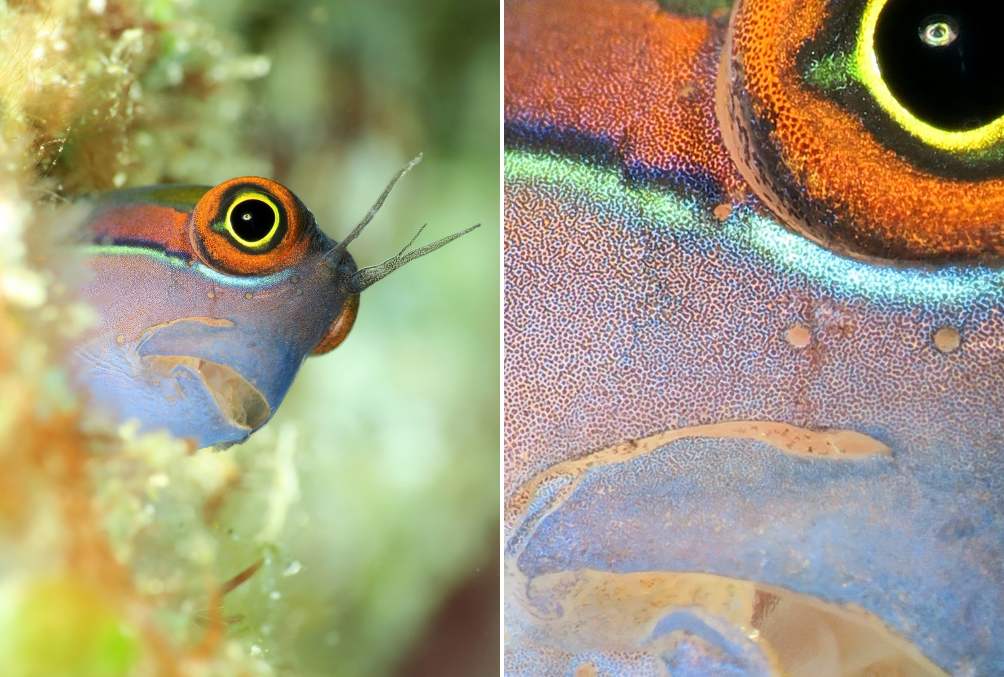The CMC is the third in the series of optics released by Nauticam and is a very powerful yet very compact lens (weighing in at 260g, 70mm diameter x34mm length).
As the UK, French and Irish distributor of Nauticam products, I am well aware of my commercial bias in this review, as should many of you be, so I will avoid superlatives and simply present my own experience of using the CMC and some sample photos to demonstrate the quality of this product.
A useful starting point to see the comparative strength of the CMC side-by-side with two competing lenses can be found on the independent review site, Deepshots, at the following link.
The CMC was conceived to be used primarily with compact and mirrorless cameras (both fixed macro lenses and mid range zoom lenses) but also can be used with the shorter DSLR macro lenses with which Nauticam’s SMC was not compatible. A full list of currently tested and recommended cameras and lenses compatible with the CMC can be found at the official press release for this product here. This table provides useful information regarding magnification achieved and working distance required for the compatible camera and lens range.
I used the CMC primarily with the Canon G7X in Nauticam housing with the standard 67mm threaded port.
I also used it on the Sony RX100iii. As the zoom range on the lens of the G7X is greater than the RX100iii, the greater magnification in the results with the G7X was apparent. To mount the lens, the housing or port requires a 67mm thread, Nauticam offer a flip dioptre holder designed specifically for this lens on Nauticam housings, but provide an adapter to use the lens on other housings/ports with 67mm threads.
The first thing I noticed when using this lens with the Canon G7X was that the autofocus responded well with very little hunting.
This is down to the noticeably high clarity and contrast in the lens throughout the useable range.
The fact that image quality is very high and that this is maintained throughout the useable zoom range allows shooting of a range of different size subjects.
Anyway enough talk, let’s look at some images.


As you might have noticed, with this level of magnification, I kept he aperture closed to maximise the depth of field in the image. The pleasing bokeh and absence of image quality defects I think is obvious from these images.
I am trying very hard to think of negatives for this lens so as to provide a balanced review in spite of my industry affiliations. However, this is proving very difficult to do.
The one thing I would say though of course is that when using a compact camera with a wet close-up magnifying lens, one of the key considerations is to select appropriate subject material.
The short working distance makes it unsuitable for very skittish or fast moving subjects and best results are clearly achieved with subject matter that can be approached closely and not prone to rapid movements.
The same though can be said to be true of any compact camera coupled with a strong close up macro lens.
My attempt at shooting an anemonefish, a faster moving subject, using the RX100iii was far more challenging and took about 30 shots to get a well composed and focused image (although lighting is not ideal).
To conclude this brief review, I cannot help myself but be of the opinion that the Nauticam CMC takes compact/mirrorless macro imagery to new levels of quality and, perhaps just as importantly, enjoyment of use.
Don’t just take my word for it though, reviews of the CMC and images being produced with it are starting to hit the forums, online resources and social media, many of which speak entirely for themselves.
WORDS and PICTURES by Dr. Alex Tattersall


















